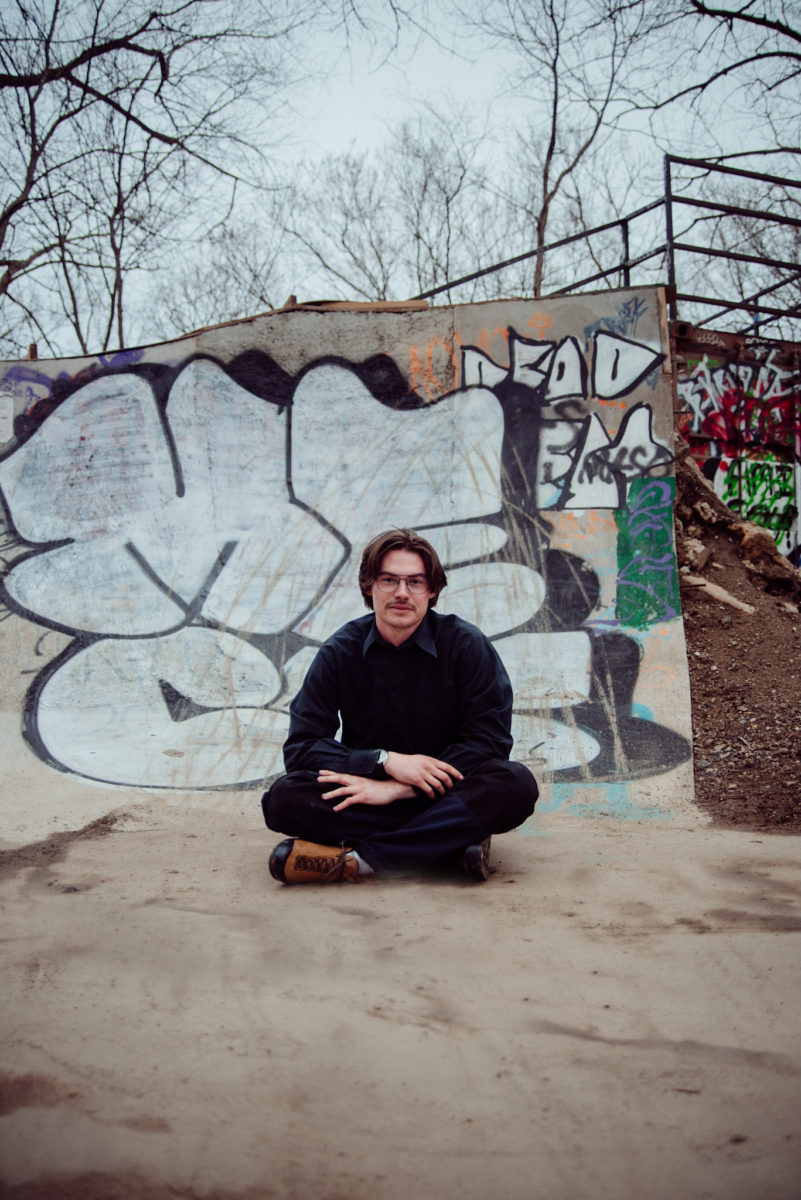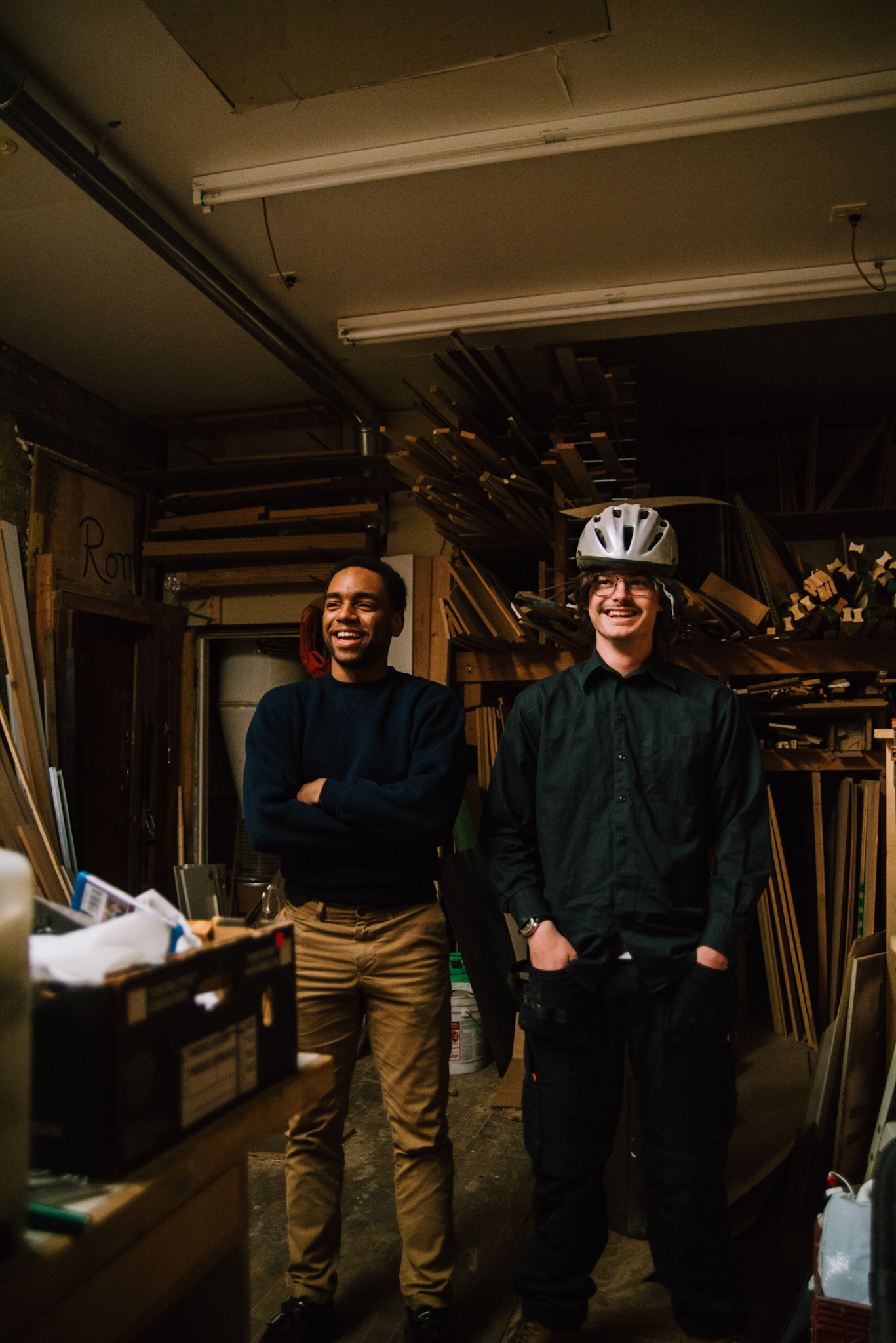When I linked up with Kari “nombreKARI” Thompson and Sam Johnson for the first time, I walked away with private links to unreleased music and they walked away with book recommendations. But what we all walked away with was food for thought, because the conversation that their short film Children Play With Fire sparked was enough to set us on our own quest of self-exploration.
As a companion to his debut album of the same name, which was released in 2021, Kari Thompson enlisted the help of co-director Sam Johnson to create a short film for the body of work. The film has already won the Chicago Award in 2021 at the CineYouth Festival, and was screened at the Chicago International Film Festival last year.
But before we jumped into the film, we broke bread. With Subway sandwiches spilling out of our mouths, we discussed our upbringings in Chicago and how growing up in the city influenced our tastes, how it nurtured our understanding, and what it taught us about being in the world. For Sam, going to Jones College Prep in the wake of Jones alumni Chance the Rapper’s rise to fame pulled him into a culture of art that influenced him to this day. For Kari, growing up in Bronzeville, selling tickets for SaveMoney concerts, and finding brotherhood at King College Prep all brewed a melting pot of experiences both pure and mischievous that would inspire his artistry.
The task of bringing Children Play With Fire to life required the two of them to develop deeper understandings of each other and their circumstances. For Sam, an Avondale native and DePaul film student at the time, this meant gaining more exposure to the elements of the South Side, including its culture and institutions. Kari brought him to Apostolic Faith Church on 39th Street, which would be his first experience at a majority-Black church. This gave him clarity to the challenge of the task.
“I needed that experience just to tell myself, ‘there are layers to this,’” Sam said. This realization influenced the way the two communicated the nuance of growing up Black on the South Side.
On its face, the film Children Play With Fire is a story about adolescence in Chicago. It investigates the relationship between childhood bliss and paranoia, mortality, and the loss of innocence. It follows a boy who journeys from playing with goldfish to playing spades, but what happens in between is, in Kari and Sam’s words, “up for interpretation.” The use of abstraction and surrealism in the film sends viewers in different directions, but the themes are clear, which creates the conditions for contemplation.
Kari has been reflecting on his youth since he started working on the album back in 2018. Reminiscing on his eighteenth birthday, he realized, “technically I’m an adult now, and it forced me to start thinking about what my childhood was like. There were a lot of moments of bliss and delight that I experienced because I didn’t necessarily have to worry so much.” But in the opening moments of the film, motion blurs, slow motion effects, street sounds, and orange tints set up an eerie, ambiguous atmosphere that remains present throughout the rest of the film.

In the film, a boy walks into a kickback—clearly underdressed and out of place—and drops a goldfish into a fishbowl in the middle of the room before the film springs into action. Immediately after, we see a group of people playing cards and the boy disappears. It’s nighttime, so when Kari (who appears in the short as an actor) asks an older kid sitting at the table if he can go grab a pack of Backwoods at the gas station, the air fills with hesitation and paranoia, because a solo mission like that could have dire consequences depending on where you are.
“The Black experience isn’t just about trauma,” Kari declared. He said this to qualify his art, noting that despite the prevalence of trauma and violence in his subject matter, there were still plenty of moments of joy and positivity in his youth. As part of reflecting on joy, he said, “sometimes you don’t really acknowledge things for what they are until you’re removed.” So when we set out across the city to spend time in places dear to him and Sam, we shared space to reflect on the highlights.
For Kari, Oakwood Beach, Afrocentric murals along King Drive, and Mandrake Park are just a few of the spots that painted his childhood with vibrant colors. He reflected on the sixth grade, when he first heard Young Pappy, King Louie and Chance the Rapper, and thought about the subcultures their music created and how they influenced a generation.
“This is bigger than music,” he said. Working in social services, Kari has firsthand exposure to the everyday challenges low-income folks face across the city. The mission of his art is to help himself and others grow. “There is no finish line,” he said, meaning that the lifeblood of his art is derived from life, and vice versa. His goals are to foster connection, build community, and have critical conversations. All of his work is a build on the lessons he’s learned before.
For Sam, we ventured to South Loop where he used to hang out after school, and Clark Park in Avondale. Here, we walked through bike trails and stepped over old tires to get to a small skate park surrounded by trees. We drove around Logan Square, a gentrifying neighborhood, and Sam pondered how the area’s changed since he was a kid and what the implications of that will be in the future. We drove past his old house, which his family sold while he was young and he mentioned that driving past it was a regular and cathartic practice for him at one point.

We ended the night as we started the first night, by breaking bread. This time we had home-cooked rigatoni in the living room of one of Sam’s oldest friends. We all walked out with full stomachs, but the cherry on top was an architectural model that Sam’s friend offered up when he found out about my interests. After some seven hours of bouncing from Wicker, to Bronzeville, back up to Avondale, and back south again, I felt worn out, like I’d just spent a day playing outside. In reality that’s exactly what we did. While exploring the elements of Children Play With Fire on screen, we ended up diving back into our youth in real life. Taking note of the struggles, we still made it a point to revisit the places, thoughts, and moments that made us smile.
In May, Kari and Sam plan to host the first public screening of Children Play With Fire, and it’ll also be one of the first times for people to convene around the film in person and react to it. “It’s an important piece and I’m just excited for people to see it. And I hope there’s other people that see it and resonate with it, that’s what it’s all about,” Sam notes. To be working on a debut album and an accompanying short film at the same time is a remarkable feat in and of itself. “It’s crazy because we first started working on this in October of 2018,” Kari says, “that’s a testament to how much energy has been put into it.”
Malik Jackson is a contributing writer at the Weekly. He last wrote How To Turn a School Into a Skate Park.


Proud of my grandson malik Jackson.